Rock climbing can be divided into a crazy mess of sub-genres: top-roping, sport, trad and about a thousand too bizarre to name. But they almost all rely on ropes to catch you if you fall. There is, however, another way: severing the nylon umbilical, and climbing rope-free above water instead.
In climbing terms, ‘soloing’ (often referred to as free soloing) means climbing tall stuff without ropes. Because a fall basically means instant death, it’s not exactly the most popular branch of climbing. But it has a less deadly cousin — deep-water soloing, a.k.a. climbing tall stuff above deep water, so a fall just gets your hair wet. DWS has all the athleticism, freedom and adrenaline rush of normal rock climbing, but without having to mess with 10km of rope every session. Basically, it’s a ton of fun.
It’s also limited to a few select locations. DWS normally happens on hot islands with jacuzzi-temperature oceans. Sadly, I live in Eastern Canada, which is a little lacking in tropical islands. But just a short hop over the border, in New York State, are the Adirondacks. More importantly, there’s a little island in the middle of Lower Saranac Lake with a 21m cliff overhanging deep water — ideal DWS terrain! (Well, ideal apart from the water temperature, which in early May hovers a couple degrees above freezing.)

Beggars (and Canadian DWS enthusiasts) can’t be choosers, though, so on the first weekend of May, I packed a couple cars full of friends, and aimed for the border. Saranac Lake is in upstate NY, about five hours from Manhattan, or a comfortable three-hour cruise from Montreal. We left early Saturday morning, with a plan for the ultimate chill outdoor weekend: drive to the lake, pick up canoes (and beer!) from an outfitter, cruise a few kilometres along the lake to a campsite on an island, right next to our climbing location.
Even if you don’t like paddling, canoe-camping is still the best way to spend a zero-effort weekend in the backcountry. Normally, you’ve got to pick between the convenience (and alcohol-carrying capability) of car-camping, and the civilisation-free awesomeness of backpacking. But with a canoe, you can load up a 120-litre drybag with liquor and steak (I’m speaking from experience here), and cruise to your campsite without breaking a sweat.

From our put-in onto Lower Saranac Lake, it was a 3km paddle to our campsite — a tiny island right next door to Bluff Island, home to the cliff. In early May, the campsites aren’t officially open, so we had the lake to ourselves. Even better, you’ve got your pick of 60-odd official campsites, without the need to pay.
We made it to the island a little after noon, recovered from the long paddle with one of Vermont’s incredible home-brew ciders, and unpacked the bags. Although we’d come mostly with the intention of deep-water soloing, which requires no gear save climbing shoes and chalk, I’d brought a full climbing rack, in case the water turned out to be too cold. But once we’d walked around our new home a little, we thought of a much better use for my 90m of rope: making a zipline over to the neighbouring Bluff Island.
Making a zipline with climbing rope really isn’t all that easy: climbing rope is dynamic, meaning it stretches to absorb the impact of a fall. It actually stretches a hell of a lot: 30% in a typical lead fall. Thanks to the laws of physics, that means it sucks for building a zipline: the weight of the person on the rope will cause a huge amount of sag, even if you use pulleys to put 500kg of tension in the rope before sliding down it.
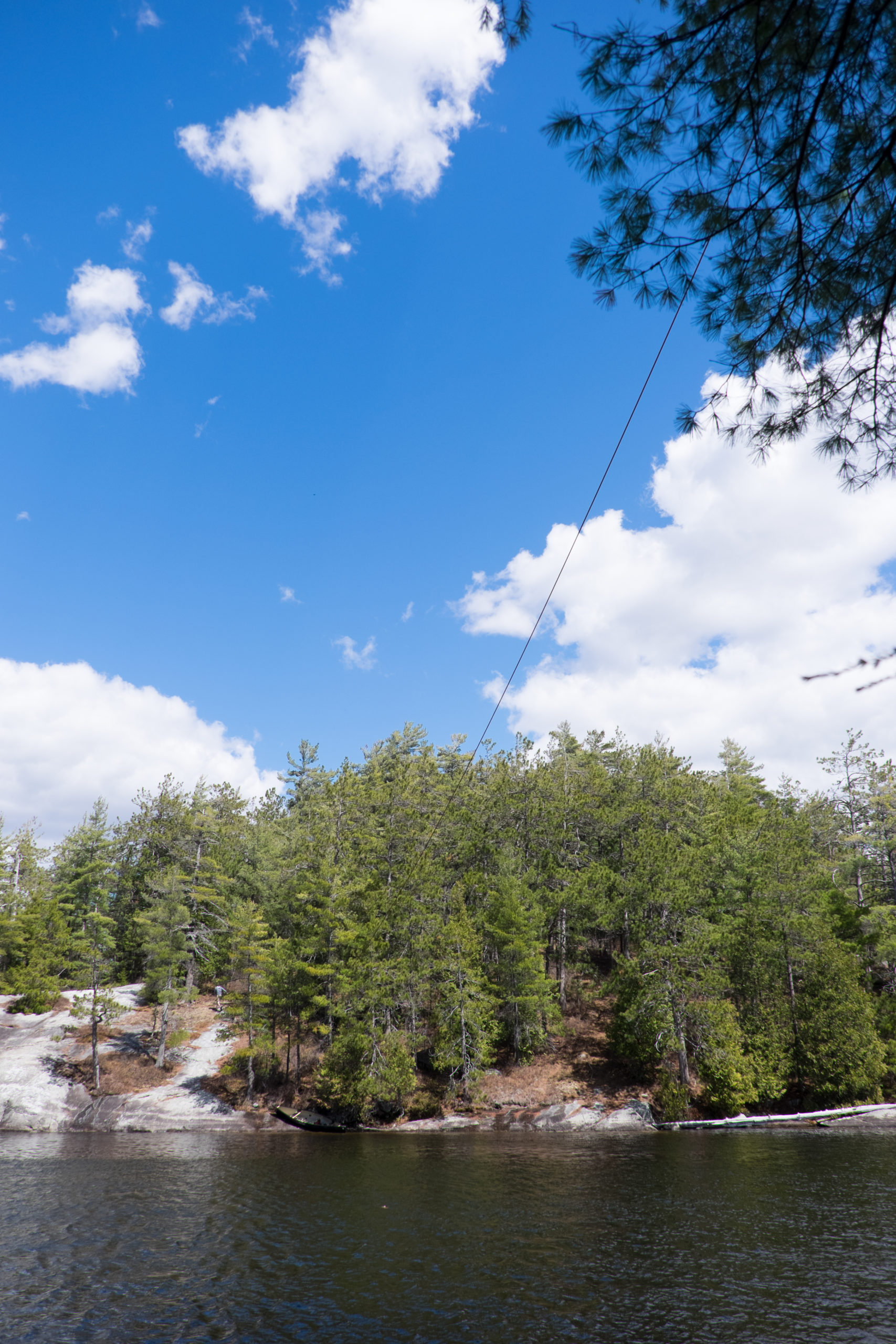
Even knowing this beforehand, thanks to a misspent youth messing with climbing gear, I felt I still had to try and get across the channel between the islands in the air. So, we rigged the zipline 12m up a tree — necessary so that, even with sag, I’d be above the water — and I pulled myself over, albeit with my arse kissing the surface in the middle. Since I was the lightest guy in the group (and no-one wanted to get stuck on a rope in the middle of a freezing lake), we cut the line down, and headed over to the cliff.
The local climbing guidebook describes the deep-water soloing on Bluff Island as “one-star climbing in a five-star location”. The cliff is 21m high, and probably the same distance wide, with a few easy lines going up the obvious cracks, and much trickier face climbs going up blank sections. Compared to most climbing locations, it’s nothing too technical, high, or exciting; but with the setting, in the middle of an achingly beautiful lake, it takes on a new lease of life.
I’m not a particularly talented rock climber (and the water was ball-freezingly cold), so my first route went up the easiest-looking crack. Technical climbing grades go from about 5.4 (a slightly steep staircase) all the way to 5.15, which would be a steeply-overhanging wall with basically no holds.
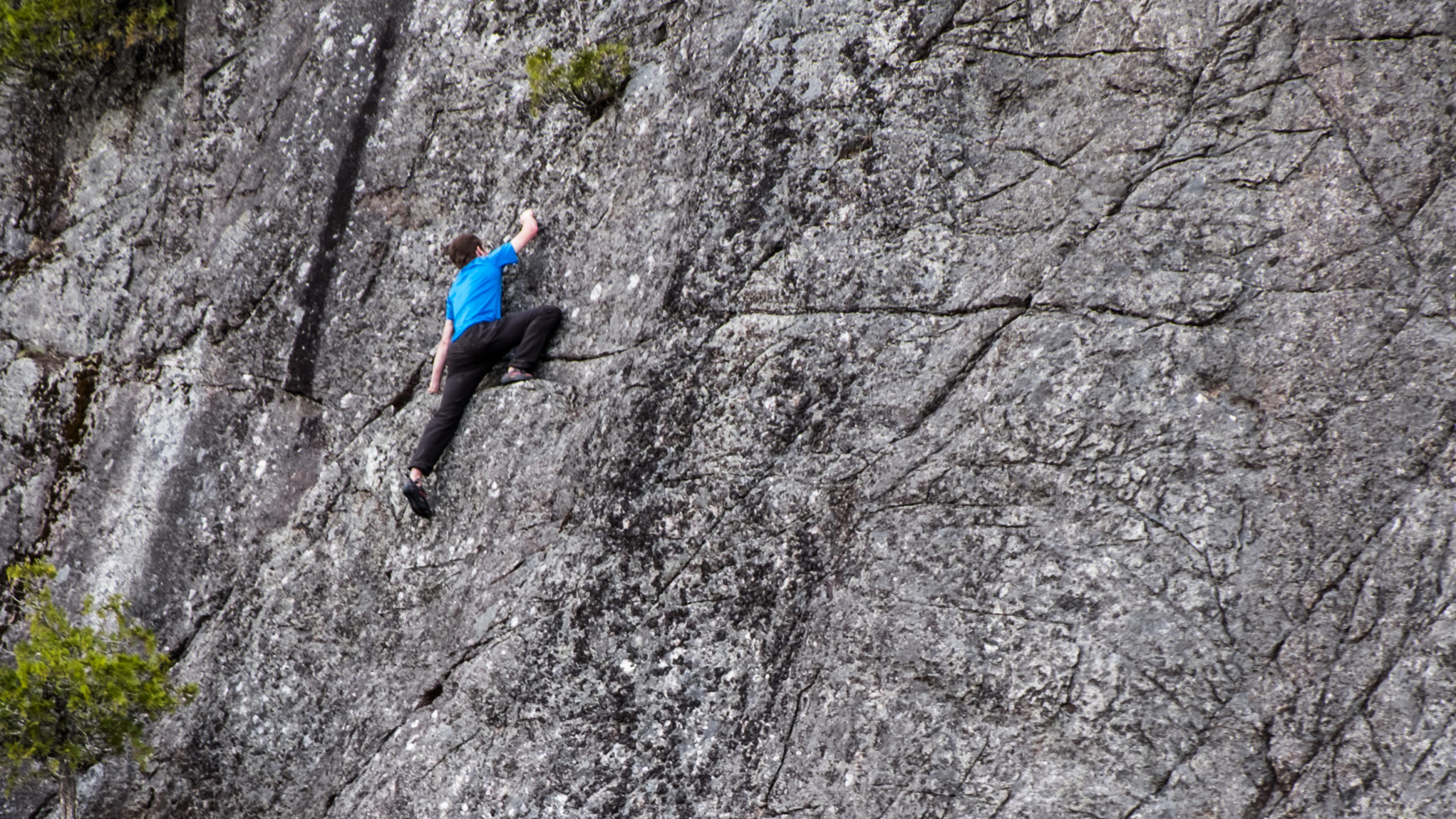
My first climb was probably a 5.7, easily within my normal gym-climbing ability; but even with the knowledge in the back of my head that it was deep water below, climbing at 21m was enough to freak me out. I don’t normally have any problem with heights, but sitting on the equivalent of a four-story building with no rope made my palms pretty damn sweaty.
I’d never even jumped off a cliff that high before, so, before going back around to try another line, I decided (with some not-so-subtle peer pressure) that jumping back down would be the best way to restore my confidence. Practising falling is a common exercise for nervous sport climbers, so there was some kind of sense behind the idea.
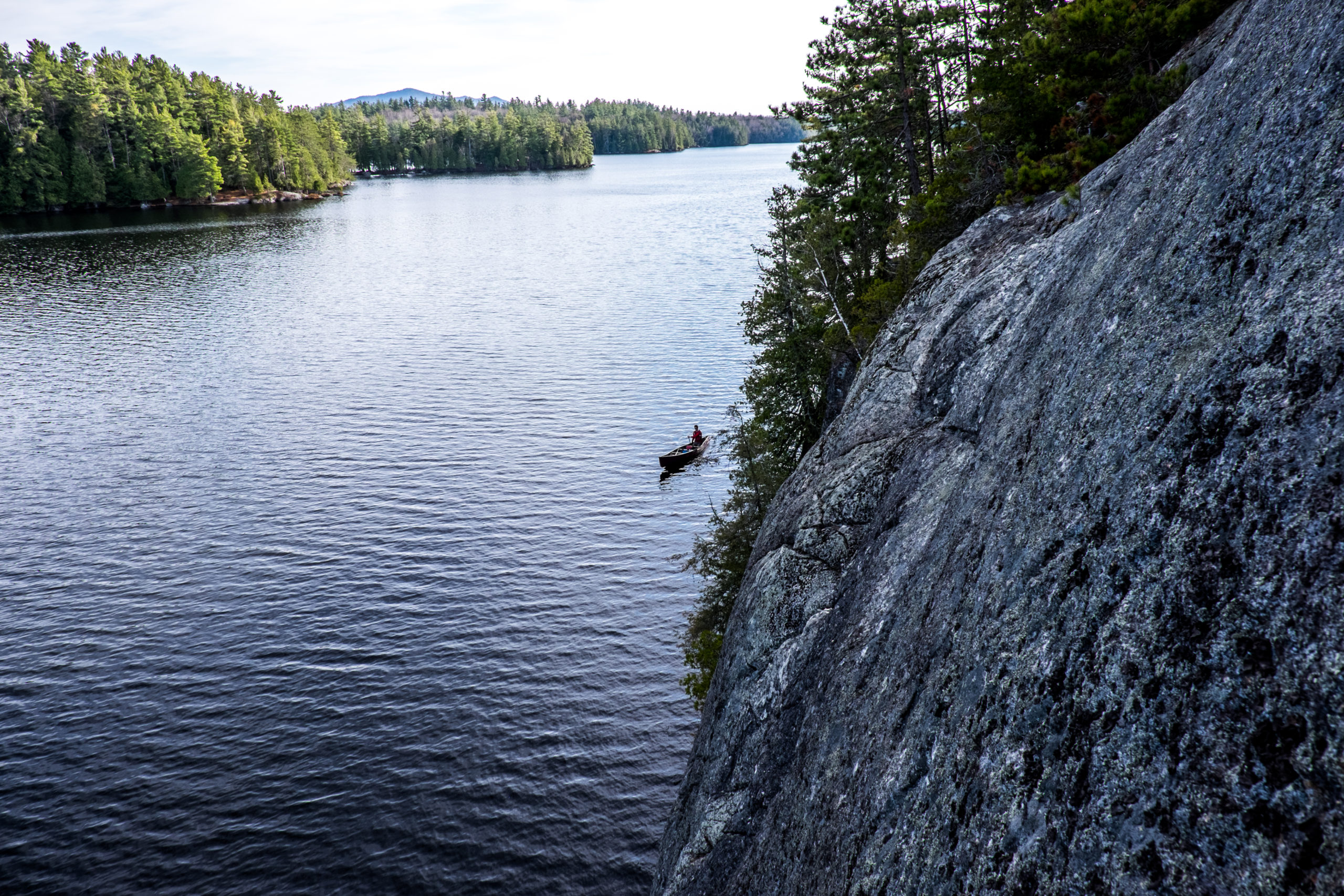
21m is a long way down, though. I’ve done some big ropeswings before; this was another level. You’ve actually got a lot of time to think on the way down: there’s time for your brain to ask questions like “why the fuck am I doing this”, “how bad would a belly-flop hurt”, and “I wonder if that stuff about jumping into freezing water causing heart attacks is actually true”, before you’re suddenly 5m underwater.
And man, is that water cold. ‘Take your breath away’ isn’t just a flippant phrase with 38-degree water: I could only breathe shallowly, gasping for breaths as I swam towards the canoe at the bottom. (Pro tip for would-be DWSers: have a safety boat of some kind upwind of wherever your climber is going to land, but far enough away that deep-water soloing doesn’t turn into deep-canoe soloing.)
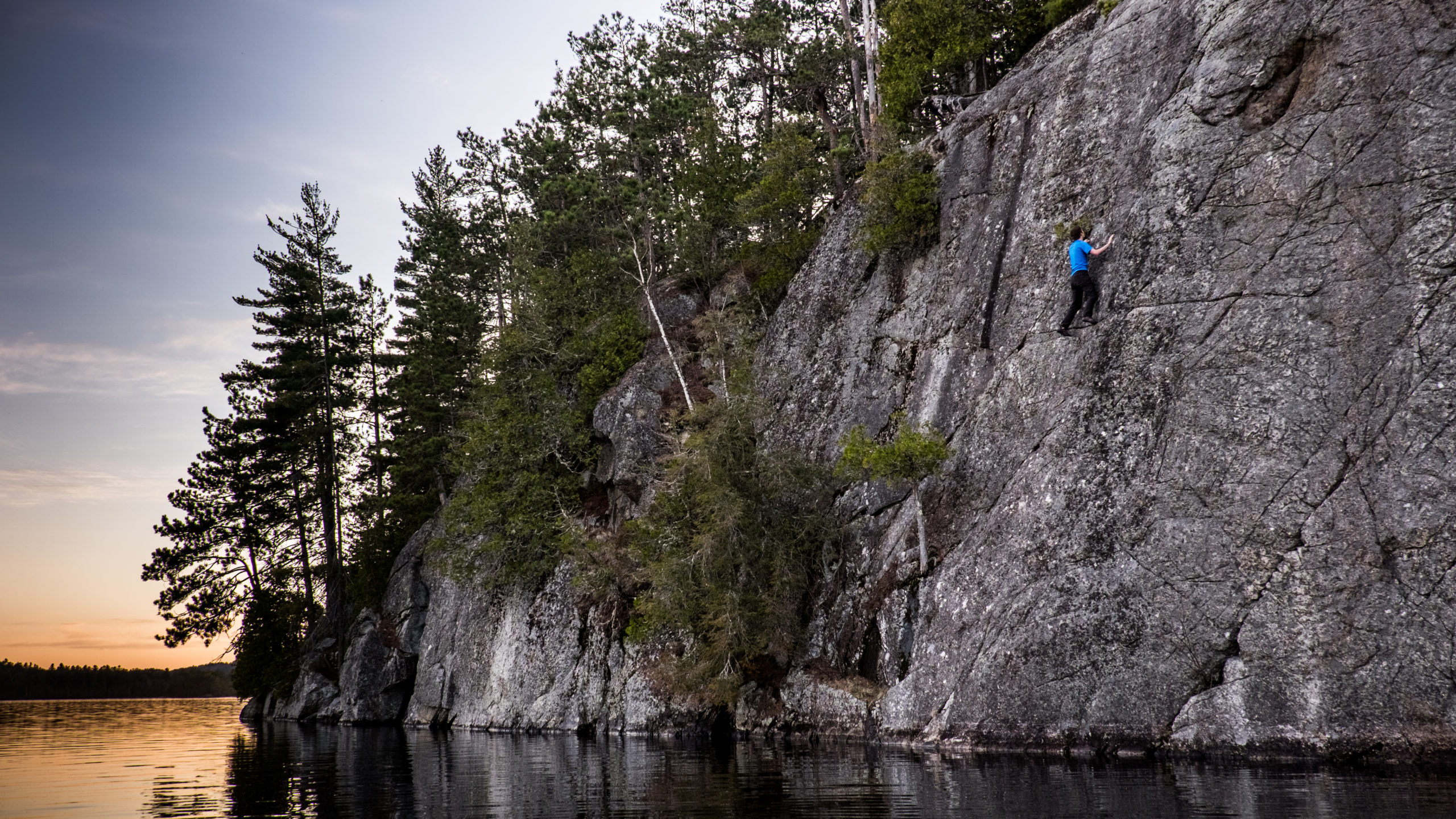
But after ten seconds out of the lake, the cold wore off, and the adrenaline kicked in. On the next climb up, feeling far more secure, I had more time to think about the actual climbing, and started to really appreciate this version. In every roped version of the sport, most of your mind is focused on getting to the next bolt, or putting the next piece of protection in the rock. Soloing, you don’t have those milestones every 3m to aim for, so it becomes much more about the rock, about the movement — about total freedom of hanging out halfway up a cliff at sunset with nothing but a chalk bag.
Anyway, after my sunset climbing epiphany, I downclimbed back to the canoe (there’s no way I was jumping into that lake after the sun had gone down), and we paddled back over to the island. This is where the real fun of canoe camping kicks in: we were isolated in the middle of a lake, with a 12-pack of freshly chilled beer, a couple fire-grilled steaks, and a full moon.
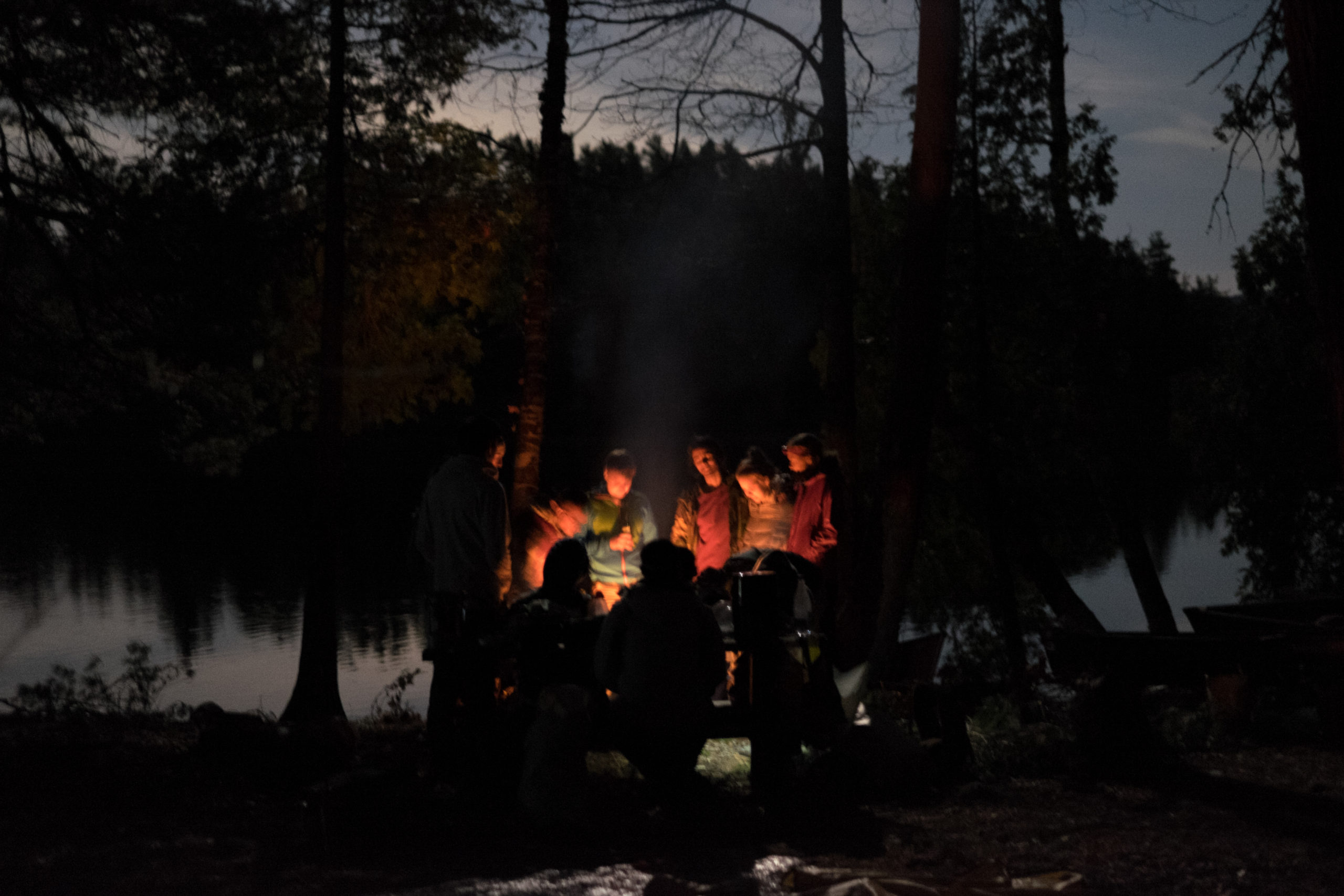
The only thing intruding on the isolation was the sound of a banjo — some guys had paddled onto the island a couple hundred yards over, and installed themselves around a fire for a night of music. Obviously, we had to go for a moonlight paddle to get our bluegrass fix, and the guy even invited us up for a few beers. Totally surreal perfection.
We woke up late the next morning, and squeezed in a few more hours of climbing — enough to finish off all the good routes on Bluff Island. With the sun getting low and canoes to return, we packed up, made waves back to the put-in, and were back in Montreal in time for playoff hockey.
Want to deep-water solo yourself?
With most kinds of climbing, the hardest part is normally buying (and learning) all the very necessary safety gear. With deep-water soloing, that’s not a problem — you don’t need to know what a figure-eight is, or how to tie a harness. What you do need, though, is a good location — a cliff, overhanging deep water. That means more than just a cliff-jumping location — when you’re jumping in control off a cliff, you can land a good 3m away from the edge, meaning some small rocks at the bottom aren’t dangerous.
But when you fall off deep-water soloing, it’s unexpected, and far less controlled. In an ideal world, you want to be climbing an overhanging cliff, so there’s zero danger of hitting anything. At a minimum (and especially if the cliff is vertical, rather than overhanging), there needs to be completely clean entry into the water.
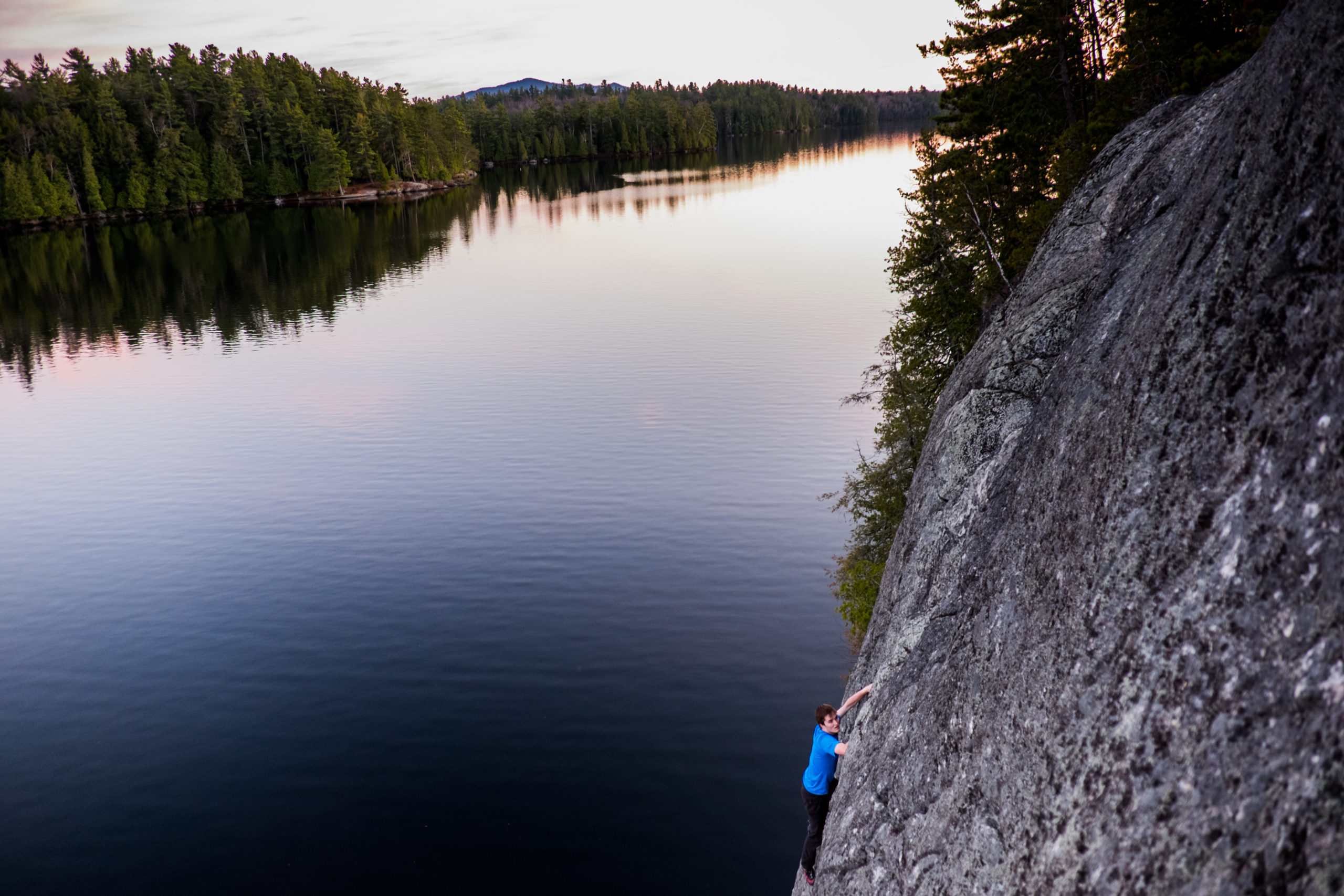
You’ll also want a safety boat in the water. A fall from any real height into water can go wrong, breaking limbs or causing unconsciousness. An ideal safety boat is something like a RIB or a larger rowboat; canoes work, just, but it’s very difficult to drag an unconscious person into the canoe without capsizing yourself.
Regardless of what kind of boat you have, position yourself upwind, and close to the climber, but not so close that they fall into the boat. Most importantly, make sure whoever’s driving knows what they’re doing: messing around with a powerboat close to shore, with people in the water, is a great way to get hurt.

In terms of gear, you need very little: ideally, a couple pairs of climbing shoes, so that when they get wet, you have a dry pair ready to go, and you don’t have to wait for your one pair to dry out between climbs. Falling into the water obviously destroys a chalk bag: a better alternative is liquid chalk, which you can apply in the boat, and should last for the entire climb.
You’ll be reading more about the sport of climbing in the near future. We plan to explain its various forms, breakdown the jargon and hopefully make it easy for you to get into.
Pictures: Justin Mendoca/Chris Mills
